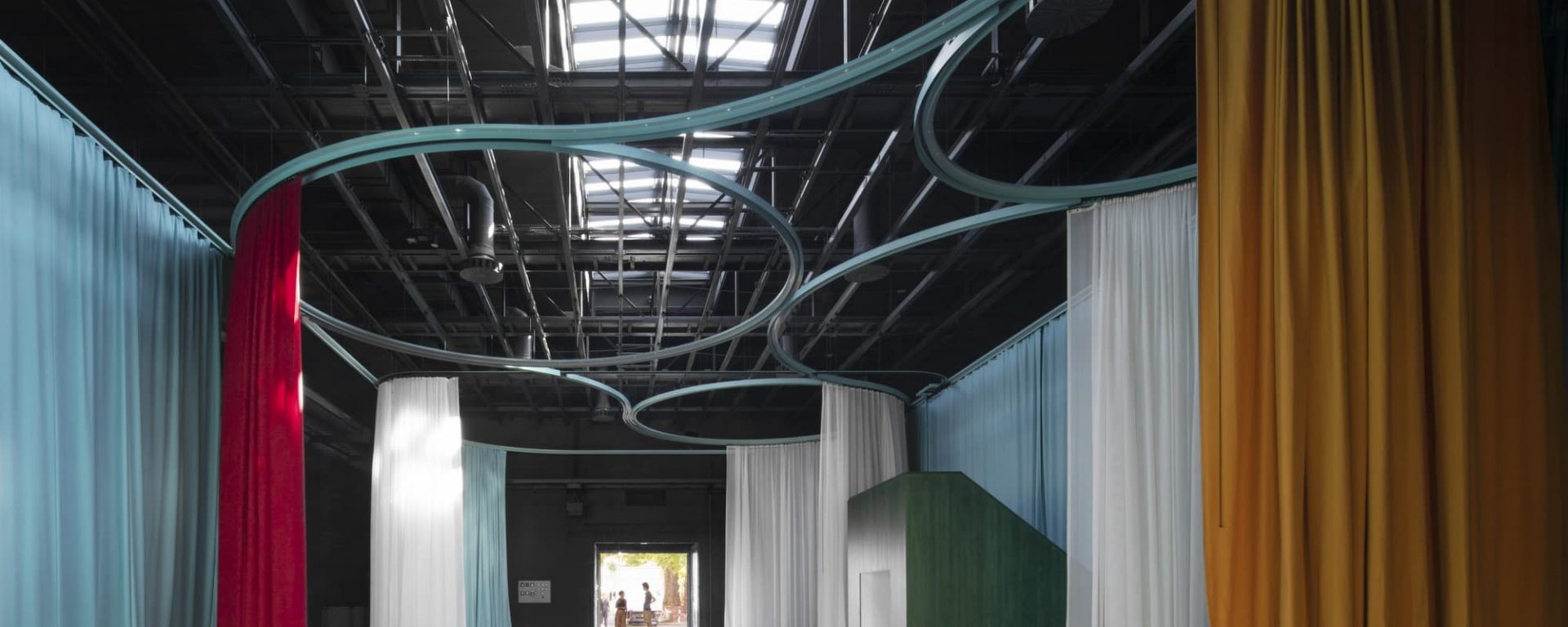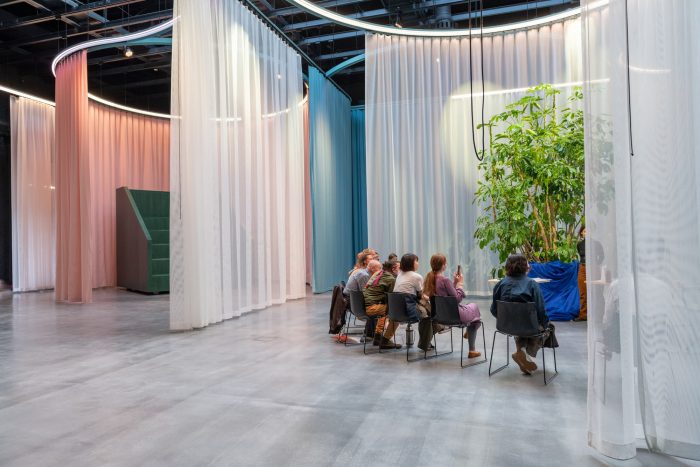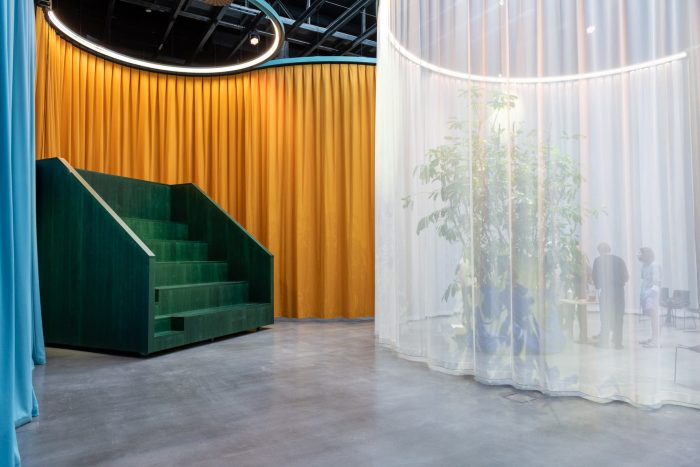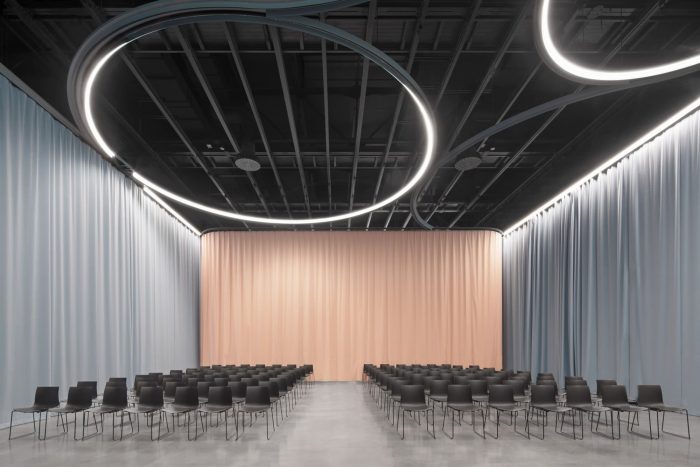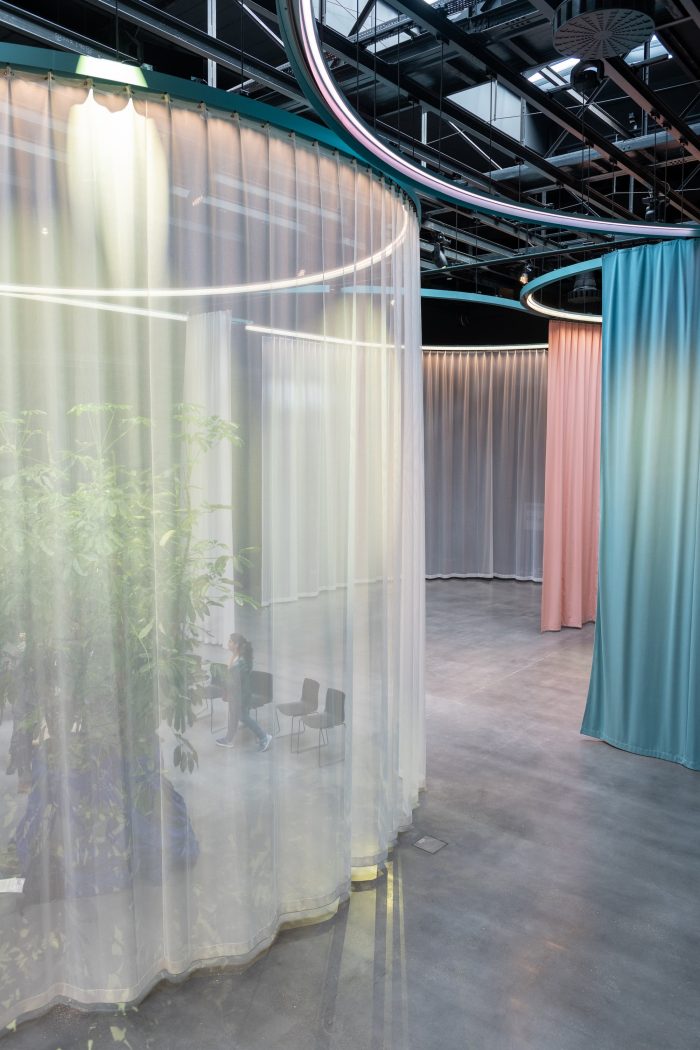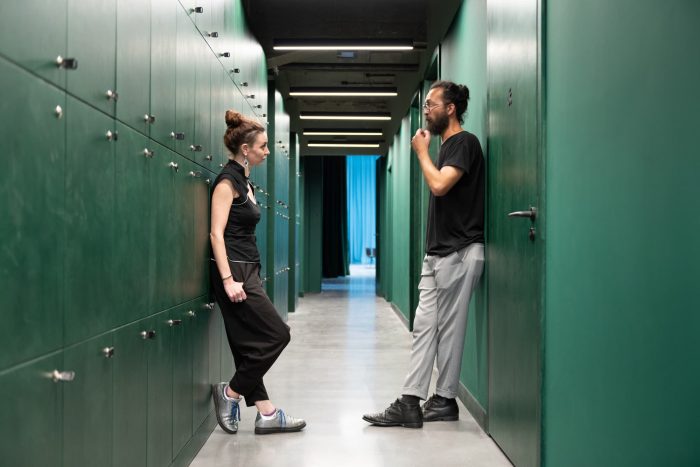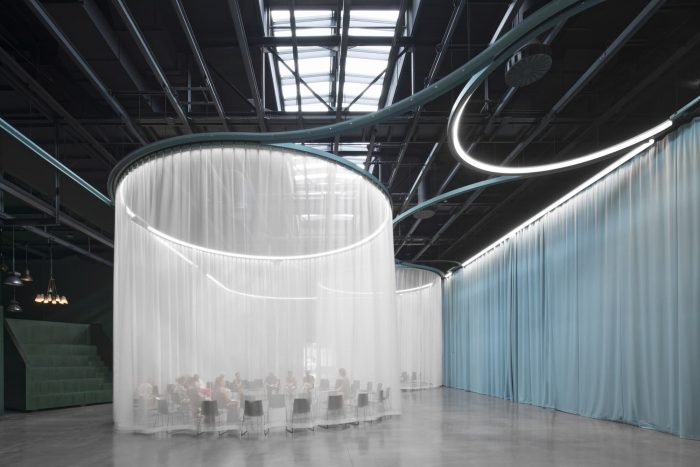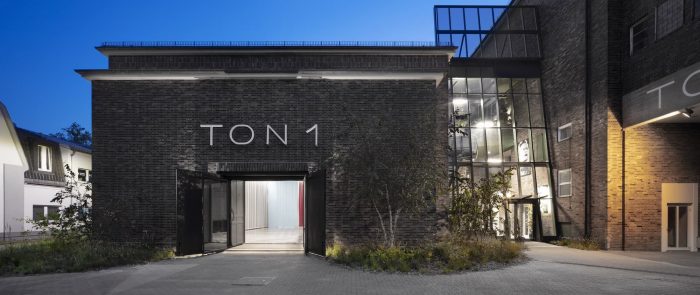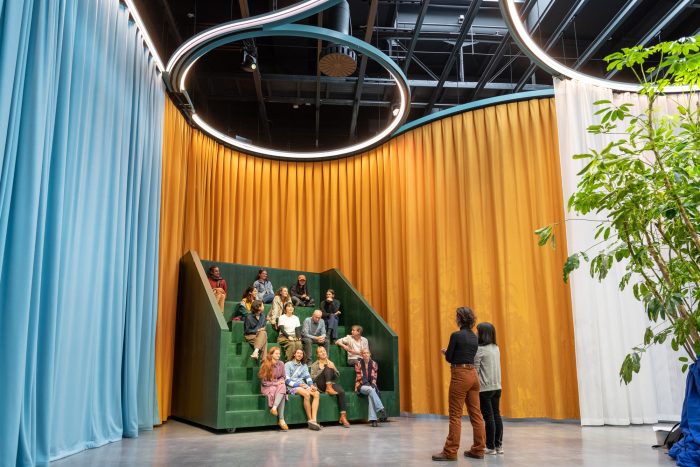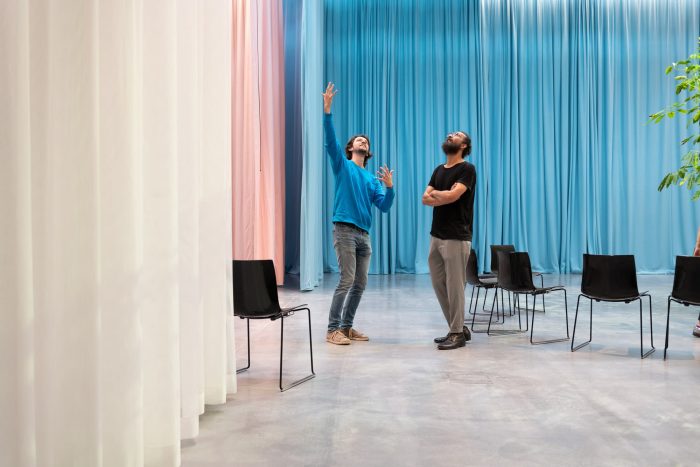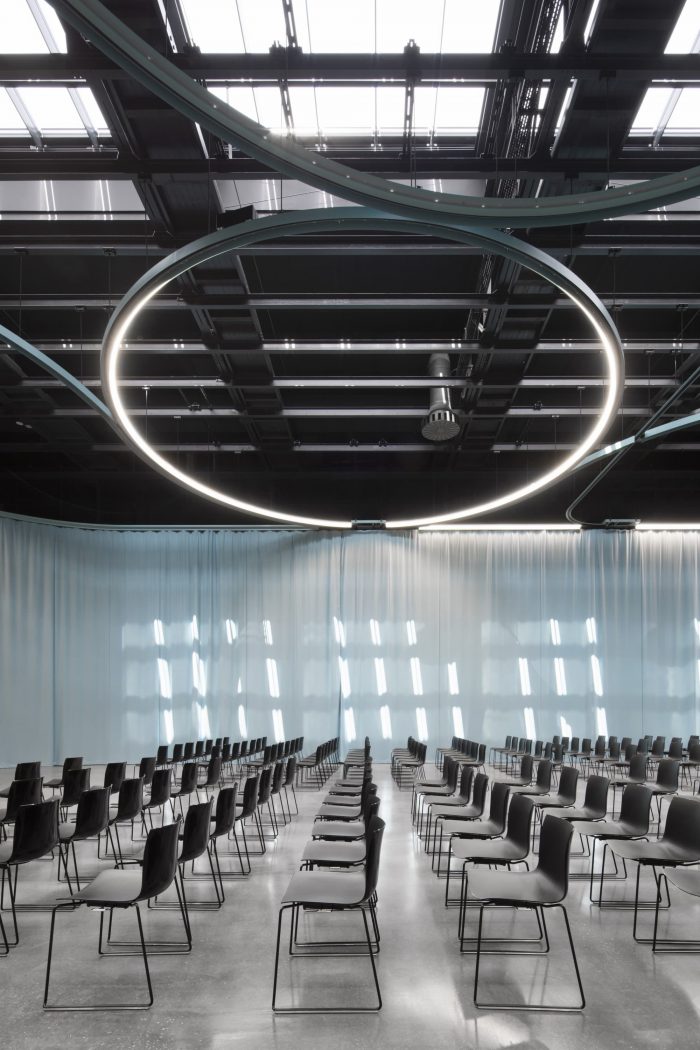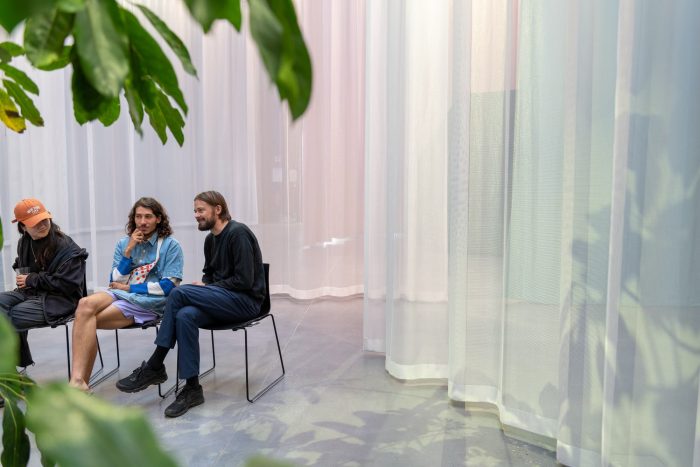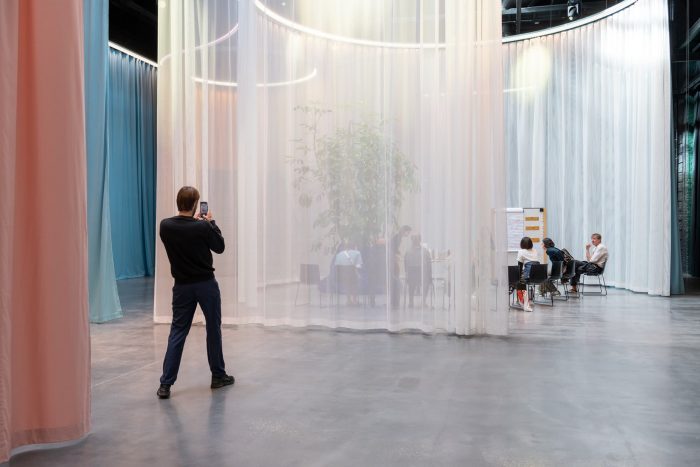BUFA位于柏林Tempelhof机场的南部边缘,自一个多世纪前建成第一批建筑以来,它一直是柏林电影和电视行业的关键部分。现在,BUFA正在将其用户群扩大到电影制作人之外,包括所有形式的 “变革者”,包括专注于活动和社会正义的组织和个人–在其物理空间的身份变化的催化下。
Situated on the southern edge of Berlin’s Tempelhof Airport, BUFA has been a key part of Berlin’s film and television industry since its first buildings were constructed over a century ago. Now, BUFA is expanding its user base beyond filmmakers to encompass all forms of ‘change makers’, including organisations and individuals with a focus on activism and social justice – catalysed by a change of identity in its physical spaces.
五个拍摄工作室和各种辅助设施形成了一个密集的园区:大型的、有魅力的砖砌建筑界定了狭窄的小巷和开放式广场。MVRDV的设计保留并加强了这种空间的多样性:一系列的可持续改造,利用现有的结构,而不是拆除和重建,使建筑物焕然一新,同时最大限度地发挥空间的潜力。
The five filming studios and assortment of ancillary facilities form a dense campus: large, charismatic brick buildings define narrow alleys and open plazas. MVRDV’s design preserves and enhances this spatial diversity: a series of sustainable transformations, which take advantage of the existing structures rather than demolishing and rebuilding, refresh the buildings while maximising the potential of the spaces between.
校园将被改造成一个以生态为中心的景观:大面积的铺装被移除,消除了车辆,增加了水的渗透性和屋顶花园和绿色广场的生物多样性。其他可持续发展措施也被纳入其中,如生态厕所、雨水收集和水循环,以及改善自然通风。目前正在考虑的另一个建议是,拆除两座过时的仓库后回收的钢材将直接在现场重新使用,以创建一个新的入口亭子。
The campus will be transformed with an ecologically focused landscape: large areas of paving are removed, eliminating vehicles and adding water permeability and biodiversity with rooftop gardens and green plazas. Other sustainability measures are also incorporated, such as eco-toilets, rainwater collection and water recycling, and improved natural ventilation. Another proposal currently under consideration would see steel salvaged from the demolition of two outdated warehouses reused directly on site to create a new entrance pavilion.
占地23,800平方米的园区的总体规划采取了一种渐进的方法来更新电影制片厂,考虑将每一个建筑的改造作为对先前建筑的回应。这些发展中的第一个项目最近获得了施工许可,是对主入口旁边的建筑,即1号房的改造,以及对1号工作室的翻新。
The masterplan for the 23,800m2 campus takes an incremental approach to refresh the film studios, considering each building transformation as a response to the previous ones. The first of these developments, which have recently received construction approval, are the transformation of the building next to the main entrance known as House 1, and the renovation of Studio 1.
1号演播室有近100年的历史,对于现代电影制作来说已经有些过时,近年来主要用于电视制作和商业广告。它也是一座被列入名录的建筑,这就要求在设计上为各种用途创造一个灵活的空间,而不以任何重大方式永久改变建筑的现有特征。该设计需要延长建筑的使用寿命,以确保校园的可持续发展,同时也尊重其历史。
At almost 100 years old, Studio 1 is somewhat outdated for modern film production, being used most in recent years for television productions and commercials. It is also a listed building, which necessitated a design that creates a flexible space for a variety of uses without permanently altering the existing features of the building in any significant way. The design needed to lengthen the lifespan of the building to ensure a sustainable future for the campus while also respecting its history.
MVRDV的设计通过 “低技术改造 “实现了这一点,其中有一个突出的特点:复杂的高空窗帘轨道–与大多数电影制片厂隐藏的窗帘轨道不同–成为空间的一个焦点。这条轨道支撑着各种颜色的窗帘,从覆盆子色到蜜黄色,可以用来划分空间,每种窗帘都有不同的功能(如隔音窗帘和半透明窗帘)。通过这种方式,新增加的建筑与原来的建筑形成了鲜明的对比:灵活而不是固定,多彩而不是黑色。砖墙保持可见,而在窗帘轨道上方,建筑的屋顶上增加了一个天窗,使空间更适合于不同的用途。建筑的其他功能也得到了更新,新的内部表面和一个新的更有效的通风系统。
MVRDV’s design achieves this through a “low tech transformation” with one stand-out feature: an intricate overhead curtain rail that – unlike in most film studios where curtain rails are hidden – becomes a focal point of the space. The rail supports a variety of curtains in a range of bright colours, from raspberry to honey yellow, that can be used to divide the space, each with different functions (such as acoustic curtains and translucent curtains). In this way, the new additions contrast the original building: flexible instead of fixed, and colourful instead of black. Brick walls are kept visible, while above the curtain rail, a skylight is added in the roof of the building to make the space more suitable for different uses. Other features of the building are updated, with new interior surfaces and a new more efficient ventilation system.
最初建于1997年的1号院的改造则更为彻底。该建筑的室内气候很差,夏天过热,墙体保温性差。它通过一个绿色的 “包裹 “使其更加有效。
The transformation of House 1, which was originally built in 1997, is more radical. The building has a poor indoor climate, with overheating in summer and poorly insulated walls. It is made more
它通过一个绿色的 “包裹 “变得更加有效,这个 “包裹 “是由一个木质框架和攀缘植物形成的,用最少的材料带来最大的影响。这个框架延伸到屋顶线以上,形成一个遮蔽的花园和屋顶亭子,可以从建筑本身和一个直接通往屋顶的人字形楼梯进入。在建筑内部,将有灵活的工作空间、咖啡酒吧和会议空间,同样的目标是用最少的新材料实现最大的性能改进。
efficient by a green “wrap”, created with a wooden frame and climbing plants, delivering maximum impact with minimal material. This frame extends above the roofline to form a sheltered garden and rooftop pavilion, accessible from both the building itself and a zig-zagging staircase that leads directly to the rooftop. Inside, the building will host flexible workspaces, a café-bar, and meeting spaces, with a similar goal of achieving maximum performance improvement with minimal new material.
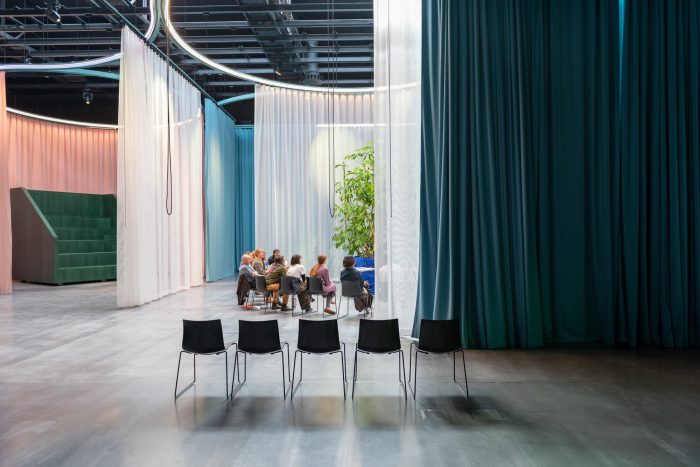 Architects: MVRDV
Architects: MVRDV
Area : 23800 m²
Year : 2022
Photographs :Yasutaka Kojima, Stefan Korte
Landscape Design : Harris Bugg Studio
Structural Engineering : B+G Ingenieure Bollinger und Grohmann
Water Management : HATI Gesellschaft für Handwerk Technik und Innovation
Electrical Engineering : ESE-project
Founding Partner In Charge : Jacob van Rijs
Partner : Fokke Moerel
Director : Enno Zuidema
Design Team : Klaas Hofman, Jonathan Schuster, Monica di Salvo, Pim Bangert, Brygida Zawadzka, Daniella Persson, Chiara Tomassi, Andre Bahremand, Simone Costa, Egle Jacinaviciute, Emilie Koch, Alexandra Farmazon, Stijn Lanters, Mathias Pudelko, Alexandru Mitea
Visualization : Antonio Luca Coco, Pavlos Ventouris, Angelo La Delfa, Luca Piattelli, Francesco Vitale, Jaroslaw Jeda, Luana La Martina, Lorenzo D’Alessandro, Gianlorenzo Petrini, Stefania Trozzi
Environmental Advisor : Peter Mensinga
Co Architect Atelier Gardens : HS-Architekten
Project Coordination Atelier Gardens : Drees & Sommer
Copyright : MVRDV Winy Maas, Jacob van Rijs, Nathalie de Vries
Developer And Investor : Fabrix
Curtain Rail Manufacturer : MKT engineering GmbH & Co
Fire Protection Consultants : brandschutz plus+Eberl-Pacan Brandschutzplaner
Av Consultants : mmt network
General Contractor : KPM3
City : Berlin
Country : Germany

